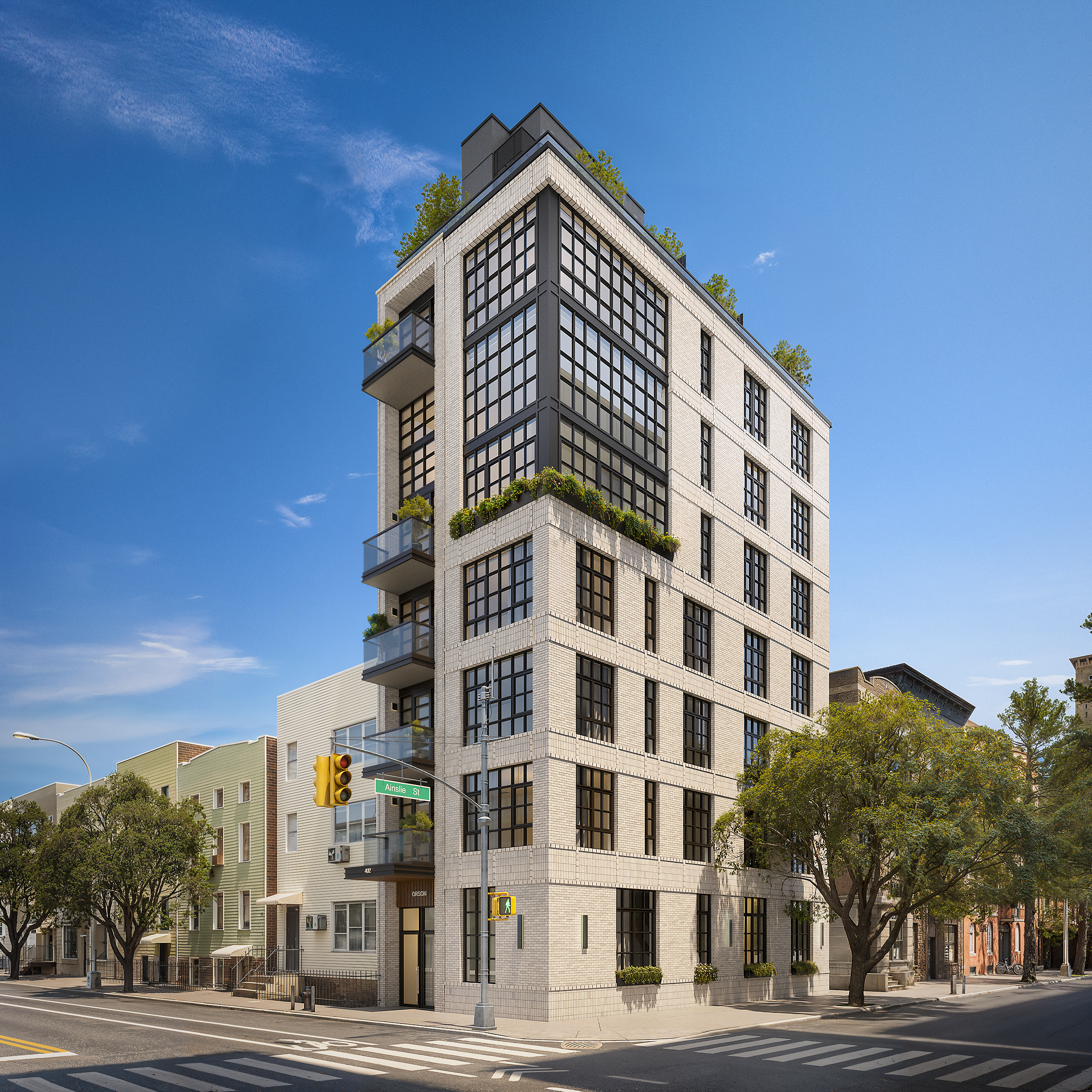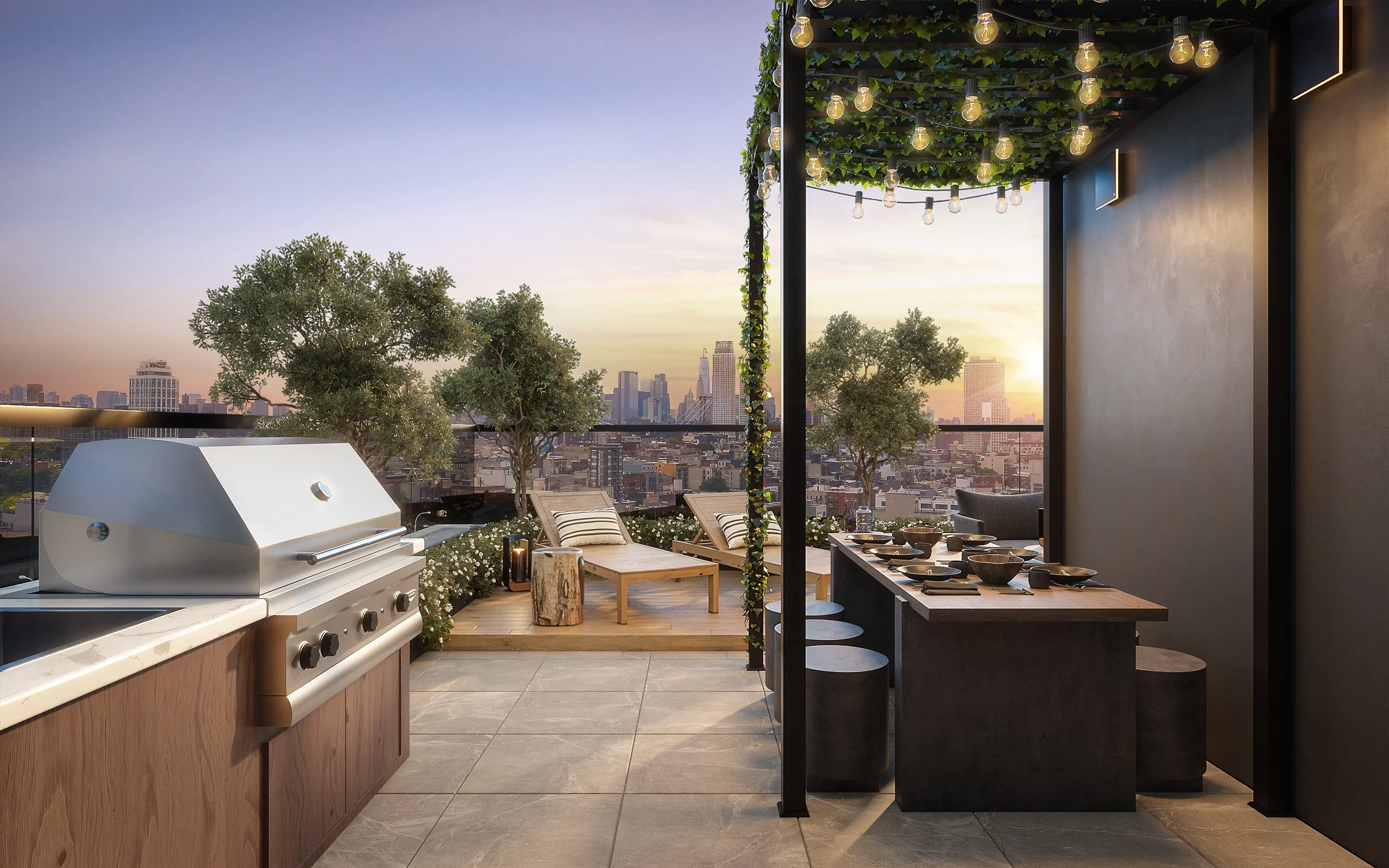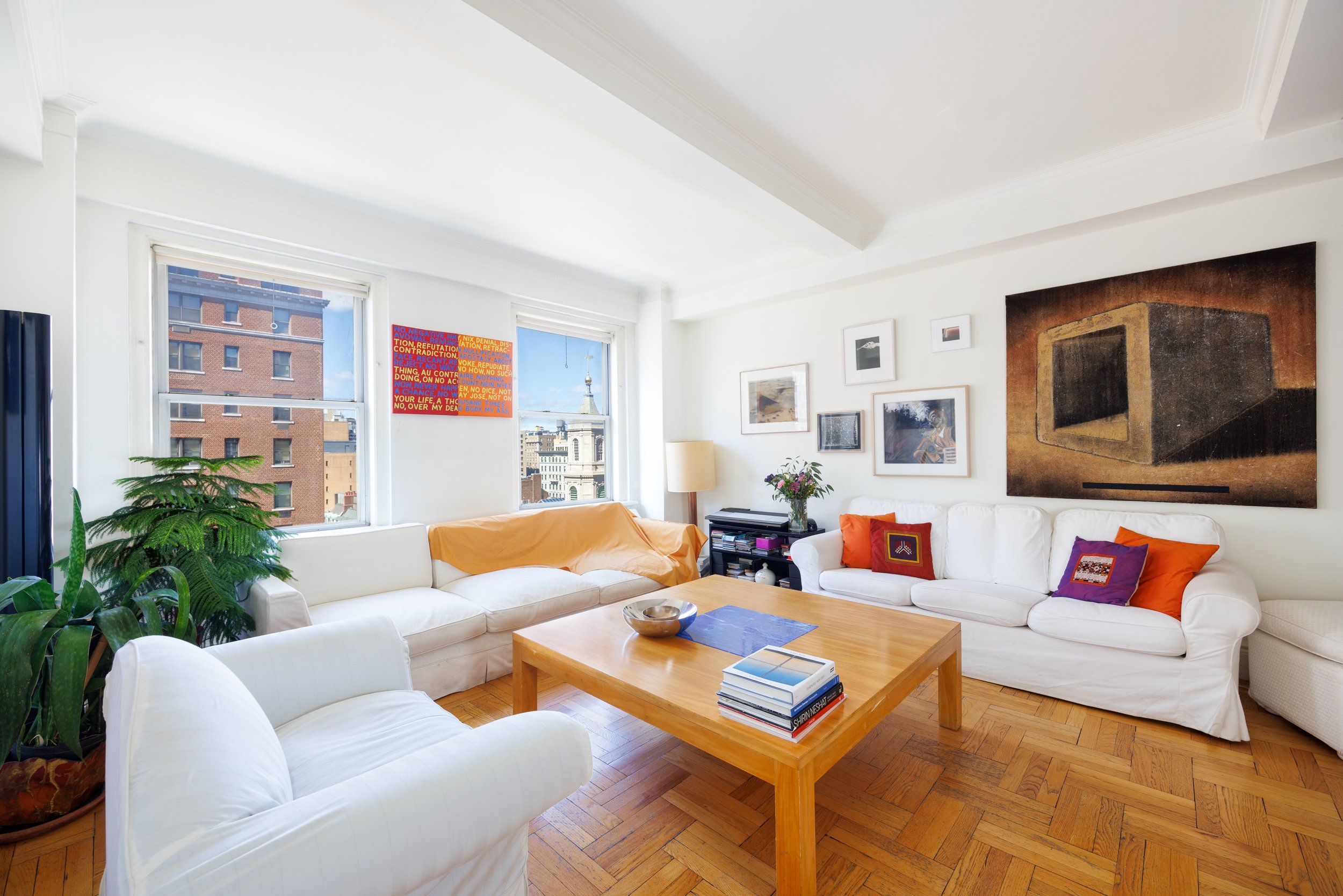NYC Rooftops Redefine Fall Living With Bocce, Pergolas, and Skyline Views
From bocce courts to pergolas and fire pits, New York rooftops are evolving into lifestyle sanctuaries designed for both relaxation and entertaining this fall.
Read MoreYour guide to New York real estate and more
Off The MRKT - Where New York's, Real Estate, Life Style, and Culture Converge
From bocce courts to pergolas and fire pits, New York rooftops are evolving into lifestyle sanctuaries designed for both relaxation and entertaining this fall.
Read MoreRental living has entered a new stratosphere, as penthouses once reserved for condo buyers are now being reimagined as the crown jewels of luxury rental towers.
Read MoreAt the crossroads of some of Manhattan’s most iconic neighborhoods, a new boutique condominium is rewriting what it means to live in the Village.
Read More
Apartment living, specifically New York apartment living, played a central role in the much-loved TV show Friends, providing a backdrop for the lives of our best-loved twenty-somethings, and preparing an entire generation for predominantly apartment-based lifestyles.
Now, with as many as two in ten Americans in hotspots like New York enjoying apartment life, it’s fair to say that, even thirty years later, it doesn’t get better than this for seeing first-hand what apartment life actually entails. Here, we consider the best lessons that Friends had to offer, and how you can turn those same insights towards your hunt for an apartment moving forward.
Lesson 1: Always choose your neighbors wisely
As well as being a much-loved (in the end) character, Mr. Heckles from Friends wasn’t exactly what you would call a decent neighbor. In fact, his banging on the ceiling at even the smallest noises was so ridiculous that it became a running joke. In reality, however, a neighbor like this could make your living situation incredibly difficult. As such, the first lesson that you’re going to need to apply to your apartment hunt is that you should always seek properties with decent neighbors. Obviously, you can't knock on the doors of everyone in a building before buying! However, you can take certain precautions, such as buying in celeb-heavy complexes where you know your neighbors will keep to themselves, or simply taking note of the condition of your neighbor’s properties, how friendly people seem, and whether you notice any noise disruption or other issues during a viewing.
Lesson 2: If you love pets, factor for them in your search
From Marcel through to Chicken and Duck, pets were as much a part of Friends as the friends themselves, and that leads us to our next crucial lesson – if you want pets, factor for them in your apartment search. The simple fact is that not all apartment complexes allow animals, and you won’t want to compromise your property by breaking those rules. Other options, like these cat friendly apartments, will allow certain animals for an agreed fee. In other cases, you may find that apartments are entirely open to animals of all shapes and sizes. Just do your research, and make sure that there’s room for your four (or two…) legged friends before making an offer.
Lesson 3: Choose locations near to friends...or not
Ultimately, Friends is a lesson in friendship, and the importance of being close to the people we love. Buying in a city filled with your nearest and dearest is certainly a great way to ensure that you’re able to put roots down in. Be warned, however, that living across the hall from your closest friends (or even across the street, as Ross found out the hard way…) doesn’t always buy you the privacy, and happy living arrangements, that you need to settle into the perfect apartment.
Apartment living can be great, but it can also get complicated. Get past that by learning from your Friends, and avoiding these pitfalls at the viewing stages!
Have a listing you think should be featured contact us or submit here to tell us more! Follow Off The MRKT on Twitter and Instagram, and like us on Facebook.
In a neighborhood defined by charm and exclusivity, one West Village townhouse is rewriting the script on scale and sophistication.
Read MoreArchitecturally striking new development by New Empire Corp. continues to set benchmarks in Queens’ rapidly rising luxury market
Read MoreStep inside a stunning SoHo loft featured on Open House TV that redefines open-concept living with soaring ceilings, sun-drenched interiors, and modern design details in one of Manhattan’s most coveted neighborhoods.
Read More
The Bogard New York Team, one of the top luxury real estate teams at SERHANT., today announced sales of The Orson, a boutique new development located at 402 Union Avenue in Williamsburg, Brooklyn. The property was developed by Ranco Capital with KAO-HWA-LEE serving as architect and interiors by Makers Collective.

Nestled on a corner lot, The Orson comprises six units including one two-bedroom duplex, three three -bedroom floor-through units, and two three-bedroom penthouses. Most units boast coveted corner frontage accentuated by oversized windows framed with custom 32-inch-high wainscotting. Intentionally designed with heritage finishes to create timeless residences, there are herringbone floors of oak wood, wainscotting, high base-boards, and double panel and steeped door frames with brass hardware. Kitchens feature walnut shaker cabinetry and Calcutta Vagle Rosatto polished marble countertops and an appliance suite from Bertazzoni and Fisher & Paykel; the bathrooms have oak cabinetry and Nordic Grey, Honed Marble.

“We take a very thoughtful approach to our developments to ensure we craft warm homes with an enduring design,” said Avrumy Gluck of Ranco Capital. “With The Orson, we wanted a building that delivers unparalleled beauty and uncompromising quality – every material, finish, and detail was carefully curated to bring a timelessness not just to the residences, but to its future residents.”

Residences of The Orson are entered via keyed elevator access. Amenities include a secure package room and a furnished rooftop deck with lush planters, an inviting pergola, Ipe wood sunbathing area, outdoor kitchenette with grilling station, and breathtaking Manhattan skyline views.

“The Orson is an elegant building that brings a modern yet cozy feel to each of its units, offering a private sanctuary in the heart of a neighborhood known for its energy and culture” said Mallory Bogard, licensed associate real estate broker and co-founder of The Bogard New York Team at SERHANT. “With median sales prices in Williamsburg up nearly 4% year-over-year, The Orson provides a unique opportunity to own a spacious, quality home in an in-demand market.”
Sales of The Orson are being led by Brandon and Mallory Bogard.
Have a listing you think should be featured contact us or submit here to tell us more! Follow Off The MRKT on Twitter and Instagram, and like us on Facebook.
Living with 23 housemates might sound like a chaotic nightmare to some, but for Ishan Abeysekara, a 33-year-old professional in Brooklyn, New York, it's a lifestyle choice that brings connection, community, and convenience. As the cost of living in major cities like New York continues to climb and the challenges of forming new friendships as an adult persist, co-living arrangements like Cohabs offer a compelling solution. But is this modern approach to communal living the future of urban life, or just a passing trend?
Co-living spaces like Cohabs are popping up in cities worldwide, responding to a growing demand for affordable housing and built-in communities. Unlike traditional shared apartments, co-living spaces are designed to foster a sense of community while offering flexibility and affordability—attributes that are becoming increasingly rare in today's urban housing market. For Ishan, who moved from London to New York in late 2022, the decision to opt for co-living was driven by practicality and a desire to build new roots quickly.
He articulates a sentiment that resonates with many urban dwellers: "As you grow older, making friends as an adult gets more challenging." Co-living, he says, offers a ready-made community and a chance to make new connections in a city known for its overwhelming pace and often isolating nature.
While the setup might conjure images of chaotic college dorms, there are key differences. The residents of co-living spaces like Ishan's tend to be more mature, respectful, and committed to creating a harmonious living environment. With shared amenities like a spacious kitchen, multiple refrigerators, a rooftop terrace, a gym, and a TV room that can comfortably fit all 24 residents, the infrastructure supports both community and privacy.
But the allure of co-living is more than just shared costs and convenience; it's about fostering genuine human connections. In an age where digital communication often trumps face-to-face interaction, co-living creates organic opportunities for social engagement—whether through communal dinners, workout challenges, or simply sharing a cup of coffee on the terrace.
However, co-living isn't without its drawbacks. The transient nature of some residents can make it difficult to form lasting bonds. As Ishan points out, "If people are only here for three months, it's a bit hard to make a connection." Moreover, sharing spaces with over 20 people can come with occasional inconveniences, like waiting for a shower. But for Ishan, these are minor annoyances compared to the benefits of living in a dynamic, social environment.
The most significant advantage? For Ishan and others like him, co-living isn't just about having a roof over their heads. It's about creating a supportive micro-community that can help combat the loneliness and isolation that often accompanies moving to a new city or living alone. "I think I've met some people who I feel like I'll still be friends with when I'm 60," he reflects—a testament to the depth of connections that can form in these shared spaces.
The rise of co-living spaces like Cohabs is reflective of broader shifts in urban living and housing trends in NYC. As cities become denser and more expensive, traditional notions of privacy and personal space are being reimagined. The success of these ventures raises interesting questions: Are we moving toward a more communal way of life out of necessity, or is this a deliberate choice to foster deeper human connections?
For now, co-living seems to offer a promising middle ground—a blend of independence and community that meets the needs of today’s urban professionals. Whether it’s a sustainable model for the future remains to be seen, but for residents like Ishan, it’s a choice that has already enriched their lives.
Co-living might not be for everyone. It requires a certain level of flexibility, tolerance, and a willingness to engage with others. But as Ishan’s experience shows, the rewards—community, friendships, and a rich social life—often outweigh the compromises. As cities like New York continue to evolve, co-living could very well be the answer for those seeking more than just a place to live, but a place to belong.
Have a listing you think should be featured contact us or submit here to tell us more! Follow Off The MRKT on Twitter and Instagram, and like us on Facebook.
As the US Open heats up, explore New York City's top luxury developments where residents can enjoy private tennis and padel courts, bringing the thrill of the game right to their doorstep
Read MoreBrooklyn’s historic crossroads of Prospect Lefferts Gardens, Windsor Terrace, and Flatbush is set for a new era of luxury living with the groundbreaking of 757 Flatbush Avenue.
Read MoreBergen, designed by Taller Frida Escobedo, DXA Studio, and Workstead, begins closings in Boerum Hill. With over 70% sold, this design-forward condo blends modern luxury, wellness amenities, and curated creative spaces.
Read MoreDiscover New York City’s most luxurious new residential pools, from rooftop retreats to heated sky-high oases. The perfect places to cool off, lounge, and soak in iconic views this summer.
Read MoreBy Lisa K. Lippman, Licensed Associate Real Estate Broker, Brown Harris Stevens

There is something undeniably special about a prewar apartment. From the gracious proportions and high ceilings to the intricate architectural details, these homes have a soul that is often unmatched. For many buyers, prewar apartments offer a unique opportunity to combine historic charm with modern luxury to create a space that is entirely their own.
But that opportunity comes at a price.
Beyond the logistics, the upfront cash required can be staggering. Buyers who are capable of comfortably covering the total cost of the home are often forced to walk away—not because they can’t afford it long-term, but because they simply can’t float two homes and a full gut renovation paid entirely in cash. Watching a buyer fall in love with a property, only to realize the short-term math doesn’t work, is a heartbreaking aspect of my job.
That’s why I believe we need a new approach that reflects the way people buy homes today.
I am advocating for a financing shift that could be a game-changer by encouraging boards to consider allowing buyers to borrow based on a home’s future renovated value, not just its current purchase price.
Here’s how it would work. Let’s say a buyer purchases a classic seven for $3.5 million which is in need of a full gut renovation, and that same home, once renovated, would be worth $6 million. Traditionally, banks—and by extension, co-op boards—will finance a percentage of the $3.5 million purchase price. But under my proposed model, financing could be based on the $6 million future value.
The implications are enormous. I estimate that unrenovated co-ops priced between $2 million and $10 million could sell for 8% to 15% more under this model. That’s not just good news for buyers—it’s a win for sellers and shareholders, too, particularly in buildings where dated apartments often sit on the market at deep discounts.
This approach would also help co-ops remain competitive with new developments. Buyers comparing a brand-new condo—where the price includes the finished product—with a charming, but outdated, prewar co-op tend to default to the simpler option. But if we can ease the financing burden and bridge the cash gap, we make room for more people to say yes.
Prewar buildings offer some of the most beautiful and enduring real estate opportunities throughout the city. Now it’s time for our financing models to catch up. With just a bit of imagination—and a willingness to rethink the status quo—we can unlock the full potential of these iconic apartments for the buyers who dream of calling them home.

Lisa K. Lippman has been the #1 agent at Brown Harris Stevens for the past nine consecutive years and was recently named the #3 Top New York City Resale Broker by The Real Deal, a Golden I Club finalist, and is consistently honored among the Hollywood Reporter’s New York City Power List. With 28 years of leading industry experience, Lisa’s depth of expertise, marketing savvy, and personal attention to every detail is sought out by buyers and sellers of high-end cooperatives, condominiums, and townhomes throughout Manhattan.
Have a listing you think should be featured contact us or submit here to tell us more! Follow Off The MRKT on Twitter and Instagram, and like us on Facebook.
Just listed for $19.95M, 462 West 23rd Street is a moody, maximalist masterpiece in the heart of Chelsea—featured in Architectural Digest and dripping in bold design.
Read More